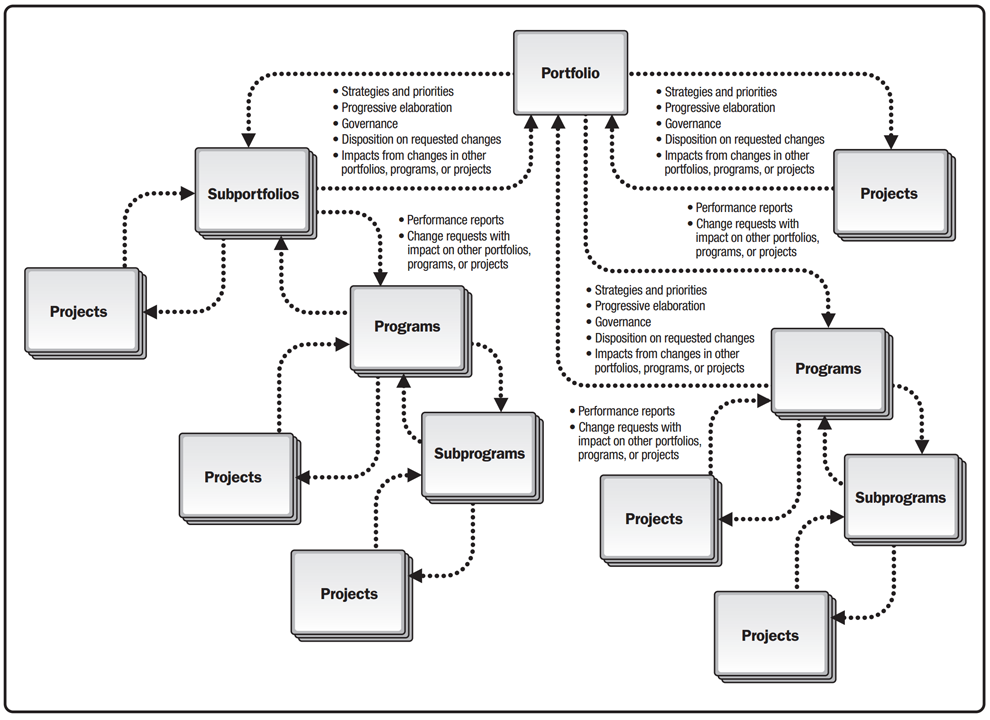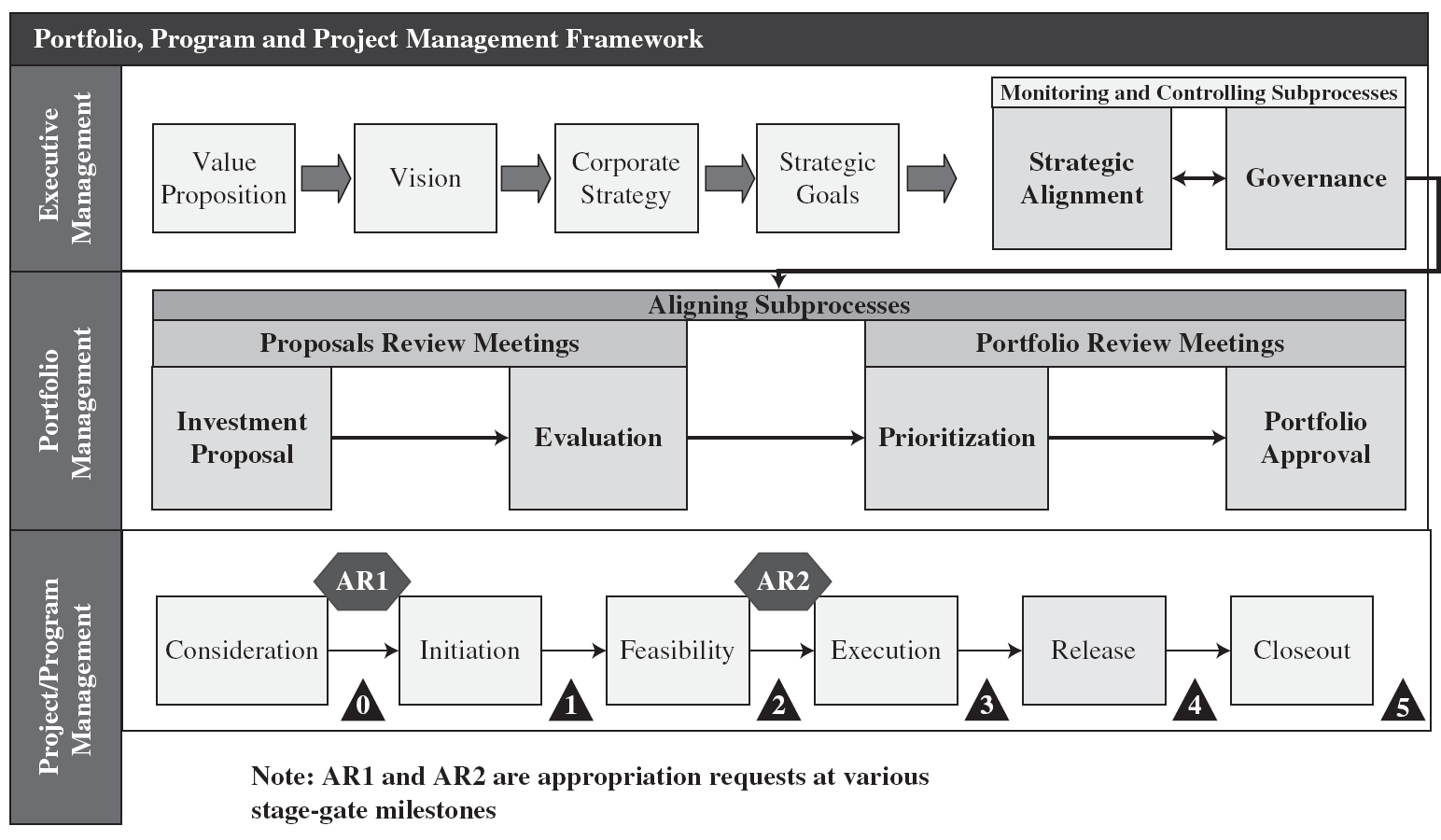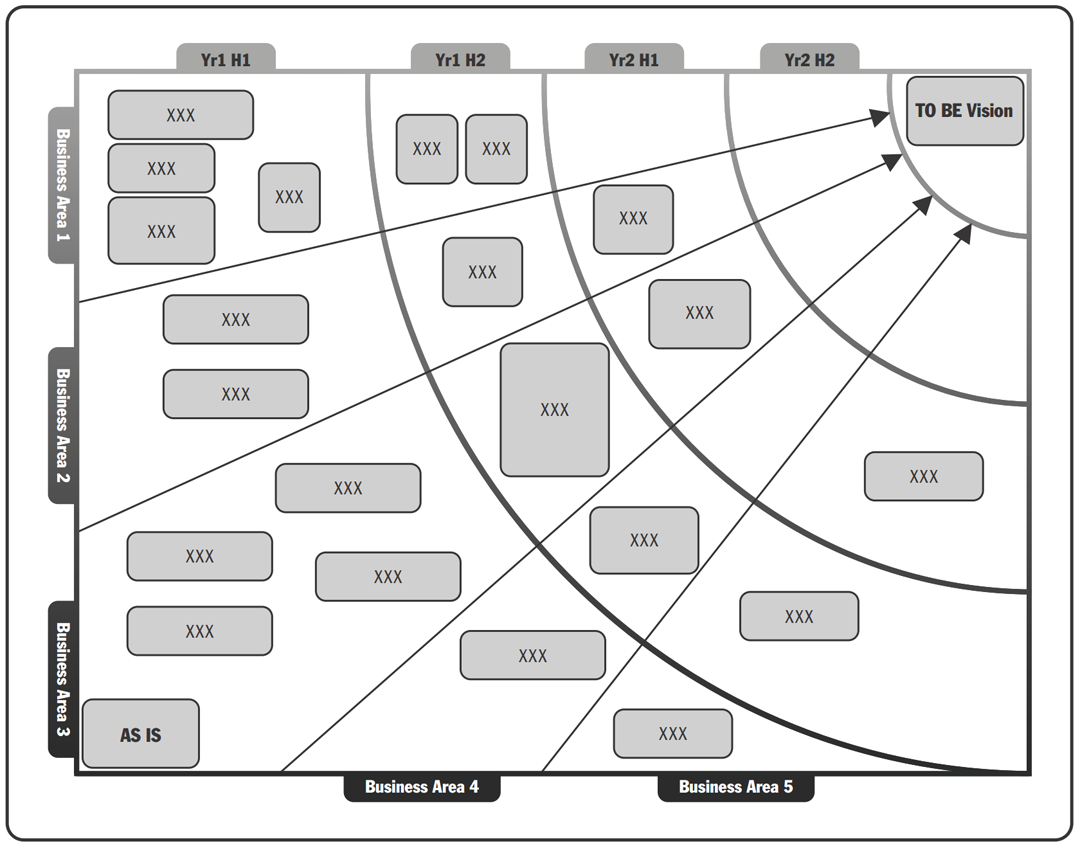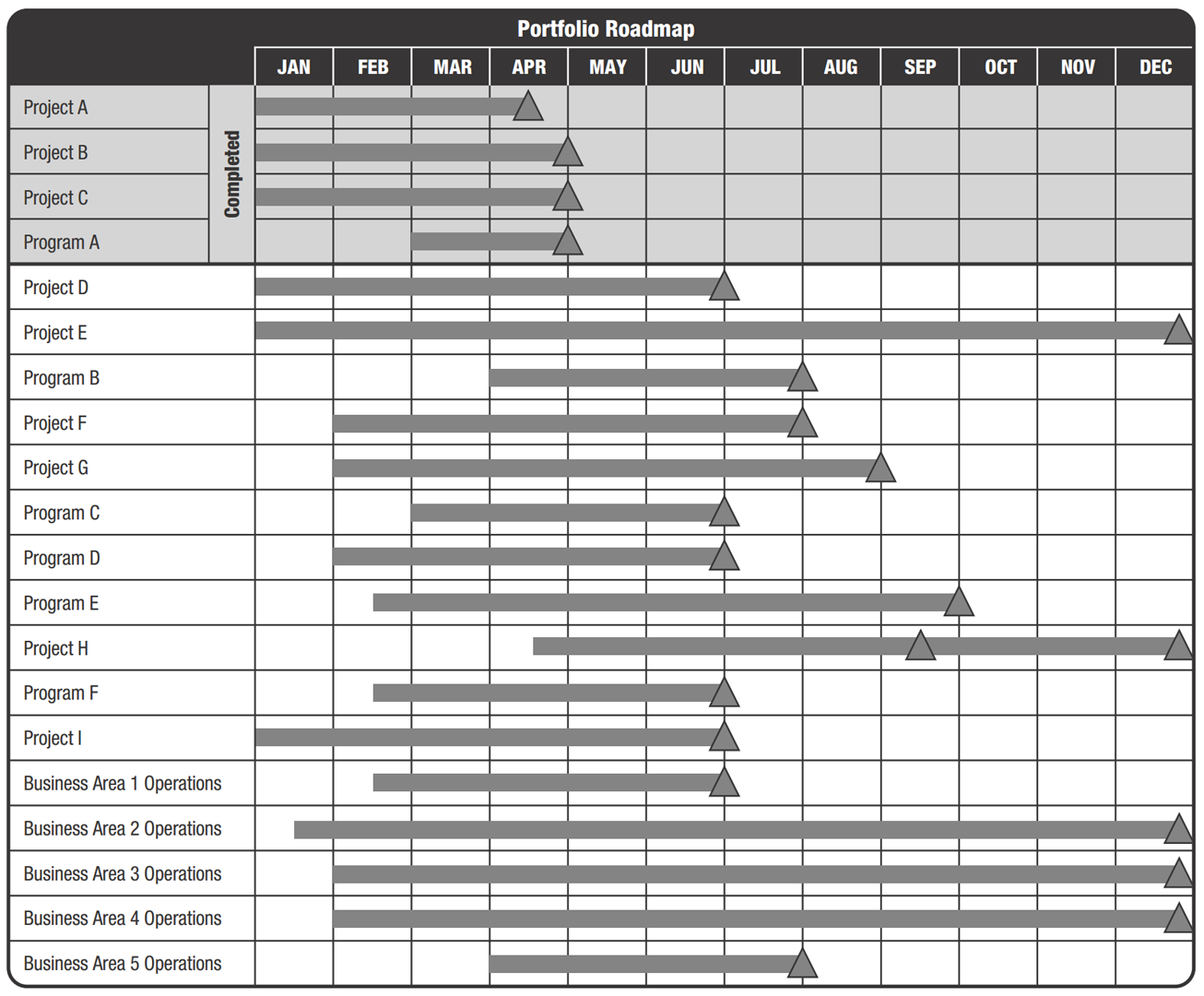Project Portfolio Management (PPM)

Project Portfolio Management (PPM) is based on the premise that a company cannot undertake each and every project idea that comes about (usually due to limited resources or limited funds). Instead, they must evaluate all project ideas and only move ahead with those that they can staff and fund, and will return the greatest value. Not all organizations use PPM nor do all organizations follow the same process when using PPM. Each organization tailors their PPM process to best meet their business needs. In general, PPM is responsible to "identify, select, finance, monitor, and maintain the appropriate mix of projects and initiatives necessary to achieve organizational goals and objectives."
A portfolio is comprised of "projects, programs, subportfolios, and operations managed as a group to achieve strategic objectives." * The following illustration from the Project Management Institute provides a visual as to both the integration and complexity of a portfolio and its components (subportfolios, programs, and projects). The directional arrows indicate the inter-dependencies between portfolio components. All portions of the portfolio are driven by the strategies and priorities of the organization.

Portfolio, Program, and Project Management Interactions (Figure 1-2)
FRAMEWORK PROCESS
Below is the flowchart we referenced in the previous video.

Portfolio Management and a Common Product Development Stage Gate Process (Figure 14-15)
Documenting and Tracking the Portfolio
Once a portfolio is selected that aligns to the business plan, an integrated view of the portfolio can be documented using various formats. We have two examples to share with you.
In the first example below, the illustration shows how a portfolio can be captured by business area as well as by the timeline as to when the projects and programs will be delivered. You will also notice that each is aligned to the TO BE Vision that is established in the business plan.

Integrated View of Overall Portfolio Strategy (Figure 4-4)
In the following illustration, we see another example of how the selected portfolio is documented and tracked. In this example, we see more details around the elements of the portfolio including a more detailed timeline, a list of the completed elements of the portfolio, as well as affected business area operations. This type of format can also be used to support the governance process which will be discussed further in week 3 of our course.

Portfolio Roadmap (Figure 4-9)
Project Portfolio Management Challenges
Although PPM sounds fairly straightforward to implement, there are many challenges that organizations face when implementing it. It does require a mature Project Management organization to implement PPM without interference, political overtures, and conflict.
Executives and senior managers must fully support the activity and not launch their own project initiatives outside of the PPM process in order to provide personal or professional gain of their own. Independently launched projects outside of the PPM process can quickly derail the entire organization by not being able to provide the proper financing and resources to deliver on the most critical business initiatives.
Another challenge is that the PPM process relies on the accuracy of the cost / benefit analysis that is done regarding the project idea. If the analysis is not accurate, is incomplete, or worse yet, is intentionally manipulated to look good, then this can cause an organization to select the wrong projects for their focus and attention. This is why a standard process for analysis, along with subject matter expert objective reviews should be conducted on project idea analysis and project feasibility studies. Project and Program Managers should be engaged in this process to ensure completeness and accuracy in the analysis.
Another challenge is that in immature project organizations, there can be a lot of political infighting, causing some executives or senior managers to manipulate other managers within the organization. This political power and influence can sway a project decision to their favor even if it isn't the best project decision for the business.
The final challenge that many organizations face with PPM is being responsive enough to the changing business needs of the organization. PPM must be efficient enough to determine, at any time, if the current portfolio is meeting the needs of the business and to be able to adjust the portfolio quickly if business needs dictate, without complete disruption to the workforce. This can be a challenge in a very dynamic business environment. If an organization relies heavily on a dynamic environment, then the use of Agile projects may be the best approach to the portfolio, as these projects are much more adaptable than Predictive projects. The portfolio could also contain a mixture of Agile and Predictive projects with the more dynamic portions of the business being managed with Agile Project Management.


No comments:
Post a Comment
Please keep your comments relevant.
Comments with external links and adult words will be filtered.